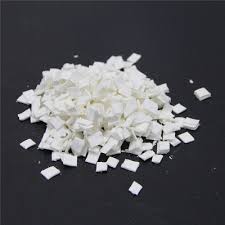Professional solutions on concrete addtives, Concrete Foaming Agent, Superplasticizer, CLC Blocks Additives, and foaming machine
PRODUCT PARAMETERS
Description
Introduction of Carbon Fiber
Carbon fiber is a high-strength and high-modulus fiber with a carbon content of more than 90%. It ranks first among all chemical fibers in terms of high temperature resistance. Carbon fiber is made of acrylic fiber as raw material and is made by high-temperature oxidation and carbonization. It is an excellent material for manufacturing high-tech equipment such as aerospace.

Function of Carbon Fiber
1. High strength and high modulus: The strength of carbon fiber is 2-7 times that of steel.
2. Corrosion resistance: Carbon fiber will not corrode and can be used stably for a long time in a chemical environment.
3. Lightweight: The density of carbon fiber is only 1.76-1.80g/cm3, which is much lighter than steel, so it can reduce the weight of the structure.
4. Thermal stability: Carbon fiber has high stability at high temperatures and will not melt or soften.
5. Electrical conductivity: Carbon fiber is an excellent conductive material and can be used to make electrodes, etc.
Parameters of Carbon Fiber
| Items | Data |
| Density | 1.78 ±0.02g/cm3 |
| Length | 300目、800目、6mm、9mm、12mm、18mm、24mm(customizable) |
| Equivalent diameter | 5-10μm |
| Tensile strength | >4000Mpa |
| Tensile modulus | >255Gpa |
| Elongation at break | ≥1.3% |
Application of Carbon Fiber
1. Road and bridge engineering: loading and unloading platforms on railway bridges of highways, roads, roadsides, and residential buildings. It can also be used for sidewalks, floors, and foundations.
2. Water conservancy projects: waterways such as dams, waterways, and pipelines.
3. Mining and tunnel engineering: used for prefabricated components of tunnels, such as linings, tunnels and gabions.
4. Cement reinforcement: adding carbon fiber can enhance the performance of cement.
5. Substrate reinforcement: can be added to various substrates (matrices), such as various thermoplastic and thermosetting resins, to provide various reinforcement functions.
6. Compression and injection molding compounds: used for compression and injection molding compounds to produce machine parts, gears and chemical valves.
7. Fuel cell manufacturing: manufacturing battery electrodes.
8. Military industry, etc.
9. Conductive oil, conductive coating, etc.
Usage Method of Carbon Fiber
Dry mixing method: mix carbon fiber and other components of concrete together, and then add water for stirring. This method is suitable for the case where the amount of carbon fiber is small, usually not more than 0.5%.
Wet mixing method: put carbon fiber into a certain amount of water, stir it evenly, and then mix it with other components of concrete. This method is suitable for the case where the amount of carbon fiber is large, usually not more than 2%.

Company Profile
Cabr-Concrete is the global leader in Low-Density Cellular Concrete (LDCC), Celluar Light Concrete (CLC), and advanced engineered foam solutions. Known globally for its commitment to research, innovation, and applied expertise, we have been providing engineered foam solutions since the early 2012’s.
We can supply Concrete Fiber over the world. The company has a professional technical department and quality supervision department, a well-equipped laboratory, and equipped with advanced testing equipment and after-sales customer service center.Send us an email or click on the needed products to send an inquiry.
If you want to know more about Carbon Fiber, please feel free and contact us: sales@cabr-concrete.com

Packaging and Storage of Carbon Fiber
Packaging: Inner plastic bag 0.6kg-2kg per small bag, outer woven bag or carton 10kg-25kg per bag, 500kg per pallet, can also be produced and packaged according to user requirements.
Payment
T/T, Western Union, Paypal, Credit Card etc.
Shipment
By air, by sea, by express, as customers request.
FAQs of Carbon Fiber
Q: Is carbon fiber repairable?
A: While carbon fiber can be repaired, it is generally more difficult and costly compared to repairing metal parts. Repairs often require specialized knowledge and equipment.
Q: Is carbon fiber safe?
A: Carbon fiber itself is safe; however, during the manufacturing process and when working with carbon fiber, dust and particles can pose inhalation hazards. Proper respiratory protection and ventilation are necessary when cutting or machining carbon fiber.
Q: How does carbon fiber compare to other materials?
A: Compared to metals like aluminum and steel, carbon fiber is lighter and stronger but also more brittle. It can be more expensive, but its weight savings can lead to significant fuel efficiency improvements in transportation applications.
Q: Can carbon fiber be recycled?
A: Recycling carbon fiber is possible but challenging due to the high temperatures involved in breaking down the composite materials. However, there are ongoing efforts to develop more efficient recycling methods to recover and reuse carbon fibers.
REQUEST A QUOTE
RELATED PRODUCTS

High Quality Polypropylene Bundled Fiber For Concrete Using

UHMWPE Fiber Ultra High Molecular Weight Polyethylene Fiber For Concrete Use

Polypropylene Monofilament Fiber for Concrete

Milling Steel Fiber Mill-Cut Hooked Concrete Steel Fiber Concrete Binder Architecturally Acicular Steel Fiber

Polyvinyl alcohol (PVA) fibres



